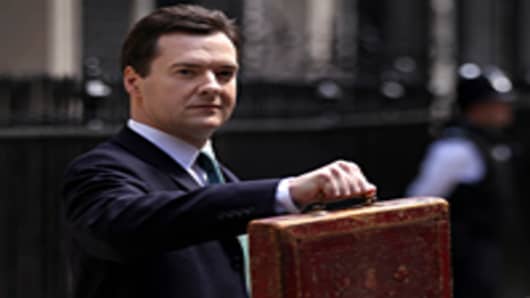How does the spending review of the UK’s coalition government look now, more than a week after its launch? A program as ambitious as this needs to be assessed against several criteria. It may fail against some, but work against others. That is very much the case with this one.
The judgments embedded in this review are economic, social and political. They relate to the speed with which the government should tighten the structural fiscal deficits, the response to unexpected developments, the balance of the tightening between spending and taxes, and the prospective level and composition of public spending. One can reasonably disagree with some aspects and agree quite strongly with others.
Let me start where I disagree. In last week’s statement, the chancellor restated his pre-Keynesian faith: “we are going to ensure, like every solvent household in the country: that what we buy, we can afford; that the bills we incur, we have the income to meet; and that we do not saddle our children with the interest on the interest on the interest of the debts we were not ourselves prepared to pay.”
The belief that the government is just a big household is fundamental to the government’s plans. It believes that if it balances its budget, the economy will automatically balance, too. That idea will be tested to destruction by the planned annual structural fiscal tightening of 1.6 percent of gross domestic product over the parliamentary term. Economic growth has been robust over the past two quarters. But in the third quarter of 2010 GDP was still 4 percent below its level in the first quarter of 2008. The economy still needs much healing, not more blows.
The decision to leave its “Plan B” to the Bank of England is another gamble. When the long-term interest rate on government bonds is down to 3 percent, the impact of more “quantitative easing” is likely to be minimal. Moreover, the Office for Budget Responsibility forecasts that the growth of business investment will contribute close to 40 percent of the growth of aggregate demand over the next five years. If businesses are to invest so strongly, they need to believe that demand will remain robust, come what may. In sum, a credible Plan B is not an optional extra. It is a necessary condition for a successful Plan A.
Now turn to the structure of the planned tightening. According to the Institute for Fiscal Studies, 73 percent of a total tightening of £110.3 billion by 2014-15 will come from lower spending. This would bring government spending back to 41 percent of GDP, its level in 2006-07. It would also be only slightly below the average ratio of the last four decades. This, then, is in line with the tax burden Jane and John Bull have shown themselves willing to bear. It is also at, or above, spending ratios under Labour before the crisis. The question is rather whether the government is too pessimistic about potential GDP. In essence, it assumes GDP will remain as much as 8 percent below the 1990-2010 trend. Alas, that might prove to be a self-fulfilling prophecy.
Finally, look at the composition of the cuts. The government has managed to find £17.7 billion in reductions in benefits, up from the £10.7 billion planned in its June Budget. This has allowed it to reduce planned cuts in public services from £42.8 billion to £35.7 billion. It has also managed to reduce the cuts in investment spending from the planned £19.3 billion to £17 billion. The big shift from Labour then is the cuts in welfare benefits. The planned cuts in public services are larger than Labour envisaged – £35.7 billion against £27 billion. But that gap is no longer yawning.
The IFS notes that, “government has refocused benefit spending away from families with children and towards pensioners”. A country concerned with its future would never do that. Yet much about the benefit system inherited from Labour was complex and capricious, with perverse effects on incentives. The housing benefits provided in some areas of London were indefensible. I wish to give the government the benefit of the doubt in its efforts at welfare reform. Yet it remains depressing that investment spending was slashed at a time of slack demand, when the government can borrow so easily. That is classic British short-termism.
Overall, the prospective reductions in real spending are the most severe since the second world war. Inevitably, much has been made of “fairness”. Yet there exists no consensus on what fairness means. Those on the left argue that the costs of a big negative shock should fall entirely on the wealthy. Those on the right insist that those willing to work should not subsidize those who refuse to do so. We have democratic politics precisely because people cannot agree on such matters. The least that is needed is for the body politic to live with a government’s decisions. That is the acid test.
This government has, in essence, decided to go political rock climbing without ropes. This is true of its fiscal judgment, of the resolute rejection of any fiscal Plan B and of the scale of the planned cuts. I cannot help but admire its courage. Whether the public will accept the package as necessary pain is the biggest question.


